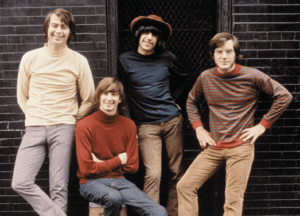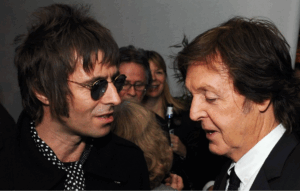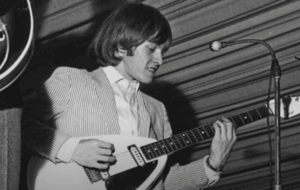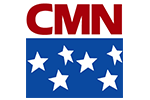Things In History Since 1918 That Doesn’t Exist Anymore

Things In History Since 1918 That Doesn't Exist Anymore
The past 100 years brought us unforgettable inventions—from the radio and TV to computers, iPhones, and even the Slinky. But not everything stood the test of time. Some once-loved items, like the Monopoly thimble or celery-flavored Jell-O, quietly faded away.
To stir up some nostalgia, Stacker put together a list of products that debuted the year you were born but have since disappeared. These toys, gadgets, and quirky creations were either outpaced by new tech or phased out with time. See which ones bring back memories—and which vanished before you even noticed.
1918: RadiThor
In 1918, RadiThor hit the market as a “radium-infused” energy drink—yep, actual radioactive water. One fan reportedly drank over 1,400 bottles before his bones started crumbling. It finally got shut down in 1931 when the Federal Trade Commission stepped in.
1919: Rotary phone
Rotary phones spun their way into homes in 1919, letting users dial calls themselves for the first time. They stuck around for decades until push-button phones took over in the ’60s. Today, most folks have ditched landlines altogether for cellphones, leaving rotary dials as a quirky piece of the past.
1920: Life Savers Malt-O-Milk
In 1920, Life Savers tried something new with Malt-O-Milk, but it didn’t exactly win fans over. Unlike the fruity flavors, it didn’t refresh or energize—so it quietly disappeared from shelves a few years later.
1921: Peace dollar
In 1921, the Peace Dollar made its debut with just over a million minted. Production stopped in 1928 when silver supplies ran low but briefly returned in the mid-1930s after a push from President Roosevelt. After that, the iconic coin quietly faded from circulation.
1922: Yamaha Hand-Wound Gramophone
Yamaha’s 1922 hand-cranked gramophone marked the company’s entry into the audio world. While it didn’t inspire the Grammy award, it set the stage for Yamaha’s future in sound innovation.
1923: A.C. Gilbert Company Chemistry Sets
In 1923, A.C. Gilbert introduced chemistry sets for kids, complete with chemicals that would raise eyebrows today. These kits sparked curiosity and, occasionally, minor explosions. By the 1960s, safety concerns led to stricter regulations, and the company closed its doors in 1967.
1924: The Moviola
Originally designed as a home movie projector, the Moviola found its true calling in film editing. Introduced in 1924, it became an essential tool for editors, revolutionizing the way films were cut and assembled.
1925: Burma-Shave
Burma-Shave’s brushless shaving cream gained fame through quirky roadside rhymes starting in 1925. These catchy signs became a staple of American highways until the company was sold in the 1960s, leading to the end of the iconic campaign.
1926: Cathode Ray Tube Televisions
In 1926, John Logie Baird showcased the first working television using cathode ray tubes. CRTs dominated TV technology for decades until flat screens took over in the 21st century.
1927: Iron Lung
The iron lung, developed in 1927 by Harvard researchers, was a lifesaver during polio outbreaks. This mechanical respirator helped patients breathe when their muscles couldn’t. With modern ventilators now in use, the iron lung has become a medical relic.
1928: Raleigh Cigarette
Launched in 1928, Raleigh cigarettes stood out by offering coupons redeemable for household items. This marketing strategy kept smokers loyal, but the brand eventually faded as smoking declined.
1929: Wonder Stories Magazine
After selling “Amazing Stories,” Hugo Gernsback introduced “Wonder Stories” in 1929, fueling the imaginations of science fiction fans. The magazine underwent several changes before ceasing publication in 1955.
1930: Mickey Mouse Comic Strip
Mickey Mouse leaped from the screen to the page in 1930 with his own comic strip. Running for 65 years, it brought Mickey’s adventures to newspapers worldwide.
Sure! Here’s a revised and rephrased version of each description in 2–3 brief sentences using simple American English with a fun, casual tone:
1931: Sleepy’s
Sleepy’s started back in 1931 and grew to more than 1,000 stores by 2014. In 2015, Mattress Firm bought it out, and now it only operates online.
1932: Cake Breaker
The cake breaker was designed to gently slice delicate cakes like angel food without crushing them. Funny enough, it later found new life as an early version of a hair pick in the African American community.
1933: Parker Vacumatic Pen
The Parker Vacumatic was a fancy fountain pen that wowed people with its cool filling system and stylish design. It took five years and a ton of money to develop—and stayed popular until 1948.
1934: Betsy Wetsy Doll
Betsy Wetsy was a big hit with kids thanks to her ability to drink, cry, and even wet her diaper. She also made history by being one of the first dolls available in different skin tones.
1935: Monopoly Thimble
The classic thimble was a staple Monopoly token for decades. But in 2017, Hasbro replaced it (along with the boot and wheelbarrow) with modern pieces like a dinosaur, a duck, and a penguin.
1936: Life Magazine
Life magazine launched in 1936 and became known for its powerful photojournalism, especially during wartime. It stopped weekly issues in 1972 and officially ended in 2000, though the name pops up for special editions now and then.
1937: Pedal Cars
Pedal cars were the coolest kid ride in 1937, selling for about $15. Production stopped during World War II, and by the ’60s, plastic toys and space-age styles pushed them into history.
1938: Drunkometer
The Drunkometer was an early version of the breathalyzer, created by a professor in Indiana. It used a balloon and some purple liquid to measure alcohol levels—pretty high-tech for the time!
1939: DDT Pesticide
DDT became the go-to bug killer in 1939 after Paul Müller found it could wipe out pests fast. It was widely used until the 1960s when people realized how toxic it was, leading to its U.S. ban in 1972.
1940: Daring Mystery Comics
Before Marvel ruled the superhero world, there were Daring Mystery Comics. They hit shelves during the Golden Age of Comics, laying the groundwork for all the caped crusaders we know today.
1941: Gourmet Magazine
Gourmet magazine hit the scene in 1941 with fancy recipes, glossy pages, and mouthwatering photos. It became the go-to for food lovers with refined taste. After nearly 70 years, the final issue was served up in 2009.
1942: Hawaii Overprint Note
After Pearl Harbor, the U.S. printed special money with “Hawaii” stamped on it to stop the Japanese from using U.S. dollars if they invaded. These bills were only used in the islands until 1944. Once the threat passed, they were pulled from circulation or sent to other Pacific bases.
1943: Steel Pennies
During World War II, copper was needed for wiring, so the Mint made pennies from steel coated in zinc. A few copper pennies from 1943 slipped through by mistake and are now worth serious cash. Collectors are always on the lookout for these lucky coins.
1944: Lead Pipe from Clue
When Clue first came out, the lead pipe was one of the classic six weapons. But over the years, the game updated its arsenal. Eventually, the lead pipe got retired from the lineup.
1945: $500 Bill
The $500 bill featured President William McKinley and was last printed in 1945. It was officially discontinued in 1969 and is now a rare collector’s item.
1946: Ayds Diet Pills
Ayds diet candy promised to help you slim down with flavors like chocolate and caramel—plus a strong stimulant inside. It was popular in the ’70s and ’80s but faded fast when the AIDS epidemic gave it an unfortunate name. Canada banned it, and the product disappeared.
1947: Polaroid Cameras
Polaroid cameras were a huge hit when they launched in 1947, offering instant photo magic. They stayed popular until digital cameras took over. In recent years, retro lovers have tried to revive them—but old-school fans say nothing beats the originals.
1948: Tiny-Mite Radio
Tiny-Mite radios brought big fun to kids in 1948. These tiny crystal radios let little ones tune in and enjoy their own mini airwaves.
1949: Man-from-Mars Radio Hat
This wild invention combined a hat with a built-in radio—perfect for news on the go. It came in bold colors and sold for $7.95. By 1955, it fizzled out as the sleeker transistor radio took over.
1950: Early Remote Control
Zenith’s Lazy Bones was the first TV remote, connected to the set with a long cord. People loved the idea—until they kept tripping over it! Soon, it was replaced by the Flash-Matic and the cable-free Space Command.
1951: Videotape Recorder
Charles Ginsberg’s invention at Ampex changed the game—finally, TV could be recorded on magnetic tape. It paved the way for home VCRs in the ‘70s and stayed popular through the early 2000s. But once DVDs and streaming took over, the VCR quietly left the stage, with the last one made in 2016.
1952: Abbott and Costello Show
The comedy kings of “Who’s on First?” fame brought their talents to TV in the early ’50s. Their namesake show ran for two solid seasons and gave their careers a fresh boost. After it ended, the legendary duo parted ways after one final movie together.
1953: Rabbit Ears
TV reception got a big upgrade when Marvin P. Middlemark introduced rabbit ears in 1953. These simple antennas made fuzzy screens a thing of the past. Today, modern digital antennas carry on the tradition with a tech-savvy twist.
1954: Transistor Radio
The transistor radio hit shelves in 1954 and instantly became a teen must-have. For $50, you could take your tunes anywhere—AM-style. It sparked a wave of pocket-sized gadgets, from alarm clocks to calculators.
1955: Cissy Doll
Madame Alexander debuted Cissy, the ultimate fashion-forward doll. She had curves, a stylish wardrobe, and wore high heels like a runway queen. Cissy set the bar for every fashion doll that followed.
1956: The Ladder
The Ladder made history as the first national lesbian magazine in the U.S. It started as a small newsletter and grew into a powerful voice featuring stories, reviews, and heartfelt letters. Though it closed in 1972, it left a lasting mark on LGBTQ+ history.
1957: Ford Edsel
The Edsel was Ford’s big bet—10 years and $250 million later, it became a famous flop. Despite offering 18 different models, it never found its audience. By 1960, it was history.
1958: RCA Victor Tape Cartridge
RCA introduced this tape format hoping to bring high-quality audio to everyday listeners. It launched alongside stereo records but never caught on. By 1964, it was shelved for good.
1959: Chatty Cathy
Mattel’s Chatty Cathy could talk—and kids couldn’t get enough. She said fun phrases when you pulled her string and earned a loyal fanbase. Discontinued in 1964, she later returned for collectors who missed her chatter.
1960: Chevrolet Corvair
The Corvair turned heads with its sleek design and even won an award from the Industrial Designers Institute. But Ralph Nader famously called it “one of the nastiest-handling cars ever built.” The controversy stuck harder than the car’s tires.
1961: Somewhere Perfume
Avon introduced a perfume called Somewhere at the start of the ’60s. It had a soft, green-floral scent—but unfortunately, it didn’t stick. Somewhere ended up going nowhere.
1962: Fizzies
Fizzies were fun little tablets you’d drop into water to make a fizzy, fruity drink. They were a huge hit in the ’60s—until their sweeteners (like cyclamates) got banned. Add in weak flavor and short fizz, and they quietly disappeared, despite a few comeback tries.
1963: Mister Rogers
Fred Rogers first introduced his kind, gentle world on Canadian TV in 1963 as Misterogers. By 1968, Mister Rogers’ Neighborhood moved to PBS and became a beloved part of childhood for decades. Though it ended in 2001, its heartwarming legacy still lives on.
1964: Celery-Flavored Jell-O
Jell-O thought celery-flavored gelatin was a good idea in 1964. It wasn’t. Turns out, no one wanted their dessert to taste like salad.
1965: Goody Two-Shoes Doll
Ideal Toy Company’s Goody Two-Shoes doll was a hit with little girls. She walked on her own and wore a sweet blue cotton dress. Battery-powered and full of charm, she was a true ‘60s favorite.
1966: Computer Weekly
Computer Weekly made waves as the first weekly newspaper focused on IT. Though the print version is long gone, it’s still thriving online with millions of tech-loving readers. A true digital survivor!
1967: Floppy Disk Drive
IBM’s Alan Shugart brought us the floppy disk drive in 1967, starting with giant 8-inch diskettes. Over time, they got smaller and more popular. Sony finally ended floppy disk production in 2011—RIP, old friend.
1968: Flower-Flavored PEZ
PEZ tried to shake things up with a floral twist in 1968. But candy that tasted like perfume didn’t catch on, even in the flower-powered ’60s. It bloomed briefly, then vanished.
1969: Flatsy Doll
Flatsy dolls were cute, bendable, and totally flat—like paper dolls you could actually play with. Kids loved them for a while, but by 1973, they had flattened out of popularity.
1970: National Lampoon Magazine
National Lampoon started off slow, barely selling half its first print run. But its edgy humor took off, sparking laughs for nearly 30 years. It even inspired comedy hits like Animal House and Caddyshack.
1971: Buc Wheats Cereal
Buc Wheats were maple-glazed corn and buckwheat flakes that had a loyal following—until General Mills swapped the maple for honey. Fans weren’t having it, and the cereal got the boot by 1982.
1972: Toaster Eggs
Downyflake thought kids would love eggs you could cook in the toaster—no pan, no mess. Turns out, it was more weird than wonderful. Toaster Eggs quietly disappeared by 1975.
1973: Playgirl
Playgirl hit newsstands in 1973 and sold 6,000 copies of its first issue. It was a bold move flipping the script on men’s magazines, but by 2015, print was gone thanks to the rise of free online content.
1974: Gerber Singles
In a strange turn, Gerber made pureed meals for single adults—yes, just like baby food. People weren’t biting, and the idea flopped fast. It’s now remembered as one of the brand’s biggest missteps.
1975: Betamax
Sony’s Betamax hit the scene a year before VHS, hoping to lead the home video market. But with higher prices and shorter playtime, Betamax lost the format war to VHS pretty quickly.
1976: Telstar Gaming Console
Coleco’s Telstar brought the Pong craze home with affordable gaming fun. They cranked out nine versions in two years, but cartridge-based consoles took over, and Telstar was toast.
1977: Town Dump
Milton Bradley’s Town Dump had players bulldozing trash onto their opponent’s yard—yes, really. Unlike their classic hits, this game was a mess and quickly ended up in the junk pile.
1978: Farrah Fawcett Shampoo
This shampoo promised Charlie’s Angels hair thanks to a commercial starring Farrah Fawcett herself. It smelled great, but washing your hair didn’t quite turn you into a TV star.
1979: Sony Walkman
The Walkman revolutionized how we listened to music—finally, your favorite cassette could travel with you. Sony sold over 200 million of them before calling it quits in 2010.
1980: The Face
The Face magazine became a go-to for cool style and youth culture in the ’80s, selling nearly 90,000 copies a month. But by 2004, print struggles caught up and the glossy folded.
1981: DeLorean DMC-12
The DeLorean became a time-travel icon thanks to Back to the Future, but the real car didn’t have such a magical run. The company went bankrupt just one year after releasing the DMC-12—three years before Marty and Doc made it famous. In 2016, fans got excited when plans for a small batch of replicas were announced.
1982: Knight Rider Knight 2000 Voice Car
If you were an ’80s kid, you probably dreamed of cruising in KITT from Knight Rider. Kenner brought that dream home with the Knight 2000 Voice Car—complete with a talking dashboard and a tiny Michael Knight in the driver’s seat.
1983: Kids “R” Us
Toys “R” Us launched Kids “R” Us in 1983 to sell trendy clothes for kids and teens. It had a good 20-year run before shutting down all 146 stores in 2003.
1984: Seiko UC-2000 Wrist Computer
Seiko dropped one of the first smartwatches before smartwatches were cool. It had just 2K of memory and a $300 price tag—serious tech for the time, even if it was mostly just a fancy calculator.
1985: No Respect
Rodney Dangerfield’s board game let fans win something he never got—respect! The Milton Bradley game featured his classic jokes and had players battling for the highest self-esteem.
1986: Entertech Water Guns
These ultra-realistic battery-powered water guns could blast 30 feet and looked just like the real thing—too real, actually. After tragic police shootings, many cities banned them, and Entertech eventually got out of the toy business.
1987: Chiquita Frozen Juice Bars
Chiquita tried to turn its fruity success into a frozen treat empire with juice bars. They poured in $30 million, but the idea melted away fast.
1988: Nintendo Entertainment System
The NES changed home gaming forever with hits like Super Mario Bros. and Zelda. It was discontinued in 1995, but a mini version made a nostalgic comeback decades later.
1989: Trump: The Game
Donald Trump cashed in on his real estate fame with a board game in 1989. It didn’t sell well at first, but he brought it back in 2004 during his Apprentice days. Now, it’s more of a collector’s item than a game night favorite.
1990: Crayola’s Dandelion Crayon
Crayola added sunny dandelion to its classic 24-pack in 1990. The cheerful yellow crayon was retired in 2017, but it still colors plenty of memories in old-school art projects.
1991: McDonald’s McLean Deluxe Burger
McDonald’s tried to go healthy with the McLean Deluxe, a burger that was 91% fat-free. Unfortunately, taste didn’t match the hype, and it flopped big time. Fans quickly dubbed it the “McFlopper.”
1992: Butterfinger BBs
Butterfinger BBs were tiny chocolate-coated balls that packed the same crunch as the original bar—just in a fun-sized form. They were a ‘90s lunchbox hit until they disappeared in 2006. Butterfinger Bites later took their place in 2009.
1993: Apple Newton
Before iPhones, there was the Apple Newton—a chunky, early PDA with 2MB of memory. It introduced the world to the term “personal digital assistant.” But after a lukewarm run, Steve Jobs pulled the plug in 1997.
1994: Pogs
Pogs were all the rage in schoolyards during the mid-’90s. These collectible cardboard discs came with cool designs and were endlessly stackable. The craze died out by 1997 when the main manufacturer, Canada Games, shut down.
1995: Josta
Before Red Bull, there was Josta—Pepsi’s guarana-infused energy drink with a fruity punch. It didn’t catch on with most folks and vanished by 1999. But fans still remember it fondly and keep trying to bring it back.
1996: PalmPilot
The PalmPilot 1000 was the pocket-sized brain of the late ’90s. With a touch screen and 128KB of memory, it helped you organize your life—before smartphones did it all. Palm’s reign ended with the rise of more advanced devices in the 2010s.
1997: Orbitz Drink
Orbitz looked like a lava lamp in a bottle, with floating gelatin balls and a strange fruity taste. It was fun to look at, less fun to drink. Not surprisingly, it disappeared as fast as it arrived.
1998: Teen People
Teen People magazine was where fashion, celebs, and teen stories all met. It gave real teens their moment in the spotlight until it folded in 2006. Still, it left a stylish mark on ’90s youth culture.
1999: MSN Messenger
MSN Messenger ruled the chat scene at the turn of the millennium. It was all about customizing your font, crafting the perfect status, and sending nudge after nudge. Microsoft shut it down in 2013, but its memory lives on in emoji-filled nostalgia.
2000: Heinz EZ Squirt Colored Ketchup
Heinz decided ketchup should be fun and launched wild colors like green, purple, and blue. Kids loved squirting weird shades onto their fries. But after a few years of funky meals, the novelty wore off and it disappeared by 2006.
2001: Sony Ericsson Phone
The Sony Ericsson T68 was ahead of its time with a color screen and optional camera add-on. It felt futuristic in 2001, but rapid tech upgrades made it obsolete in no time. A newer version, the T68i, followed just a year later.
2002: Funky Fries
Ore-Ida tried to jazz up dinner with Funky Fries in odd flavors like cocoa and kool blue. Kids might’ve been curious, but flavored fries just didn’t catch on. They were gone almost as fast as they hit shelves.
2003: Coca-Cola Swerve
Coke entered the school cafeteria scene with Swerve, a milk-based drink marked “Heart Smart.” Turns out it wasn’t so smart after all—and students weren’t swayed. It quietly vanished from vending machines soon after.
2004: Microsoft SPOT Watch
Before smartwatches became cool, Microsoft’s SPOT watch delivered weather and news via radio signals. It seemed cool in 2004, but cellular tech left it behind. By 2008, Microsoft stopped supporting it, and SPOT was history.
2005: Bald Guyz Head Wipes
Bald Guyz Head Wipes promised a clean, non-shiny scalp for the follically challenged. They came individually wrapped and ready to swipe. Sadly, they didn’t stick around for long.
2006: Hallmark Magazine
Hallmark fans were thrilled when the card company launched a heartfelt bimonthly magazine. Though readership grew, Hallmark pulled the plug in 2008 as the print market declined. A sentimental idea that couldn’t quite keep up.
2007: Original iPhone
Apple dropped jaws in 2007 with the first iPhone, priced at $499 for 4GB. It was exclusive to AT&T and sold nearly 2 million units that year. Smartphones were never the same again.
2008: BlackBerry Storm
BlackBerry’s Storm aimed to rival the iPhone but fell flat—fast. Users hated its clunky touchscreen, and it’s now a textbook example of tech gone wrong. Even the title of its tell-all book says it all: Losing the Signal.
2009: Tropicana Packaging Fail
Tropicana ditched its iconic orange-with-a-straw for a sleek redesign—and shoppers flipped. Confused by the new look, many stopped buying. The $30 million mistake forced the company to bring back the beloved original.
2010: KFC Double Down
KFC shocked fast-food fans with the Double Down—a “sandwich” made of fried chicken as the bun. It was greasy, outrageous, and totally unforgettable. It disappeared, but demand brought it roaring back in 2021.
2011: Dubble Bubble Painterz Mouth Coloring Bubble Gum
Halloween got a colorful twist in 2011 with Dubble Bubble Painterz. Each piece turned your mouth the same shade as the gum you chewed—blue, green, red, and more. It was as fun to wear as it was to chew.
2012: Original Google Glass
Google Glass was supposed to be the future—smart glasses with a built-in screen. But with a $1,500 price tag, most people passed. The first version faded out by 2015, though the concept is still alive today thanks to AI-powered updates.
2013: Facebook Home
Facebook wanted to take over your phone’s home screen with Facebook Home. But when the price dropped from $99 to just 99 cents in less than a month, the writing was on the wall. It was a short-lived experiment.
2014: Amazon’s Fire Phone
Amazon jumped into the smartphone game with the Fire Phone and its flashy 3D display. But cool features didn’t equal strong sales. By 2016, the phone had officially fizzled out.
2015: Keurig Kold
Keurig tried to shake up soda with the Keurig Kold—a countertop machine that made Coke at home. At $370, though, customers weren’t too thirsty. It was pulled just a year later.
2016: Samsung’s Galaxy Note 7
The Galaxy Note 7 had a major launch—and an even bigger problem. Phones started overheating and even catching fire, leading to a global recall. Some airlines even banned them on board.
2017: Mercedes Home Battery Pack
Mercedes tried to bring its sleek style into the world of home energy with a solar battery. Basically a car battery for your house, it aimed to rival Tesla’s Powerwall. But by 2018, Mercedes had pulled the plug on the project.


















